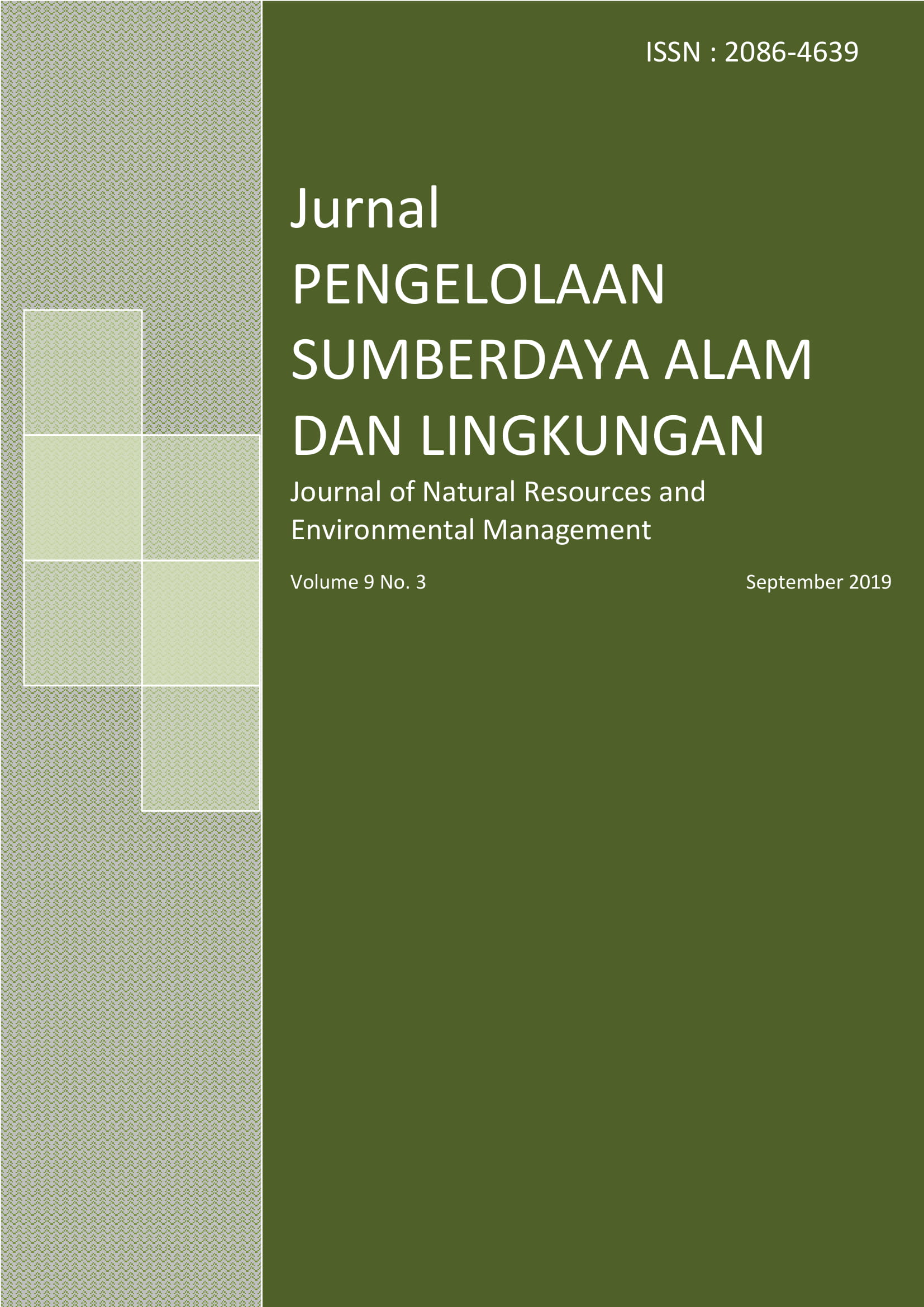Land Suitability and Availability Evaluation for Shallot Farming Development in Brebes Regency, Central Java
Abstract
Land suitability and availability is needed to be evaluated in Brebes Regency because the utilization of unsuitable land area is increasing to pursue high production targets as the impact of increased shallot demand. The objective of this research was to evaluate the land suitability and land availability for shallot farming development in Brebes Regency, an agricultural regency in Java island. The method used was the matching method between shallot growing pre-requirement criteria from Indonesian Center for Agricultural Land Resources Research and Development (CALRRD) with land quality and characteristics in Brebes Regency. Since limited data, we used an interpolation techniques from 14 sample point by using geostatistical wizard tool in ArcGIS 10.3 with inverse distance weighting (IDW) method for nutrient retention and climatologicaldata, while soil physical propertiesfrom soil map atribut data ekstraction, meanwhile terain data were constructed from digital topographic maps (countur line). The result indicated that suitable land for shallot farming development was 29.3% or 50,440.7 hectares included in the Moderately Suitable (S2); 55.5% or 95,819.9 hectares in Marginally Suitable (S3); while Not Suitable (N) was 14.8% or 25,678.3 hectares. The available land for agricultural farming based on legality was 59,076.0 hectares (without considering the existing shallot farming), while the suitable land area on available land was 56,642.6 hectares. The existing shallot land area was 49,840,3 hectares, so the available and suitable land area on existing land for shallot farming was 49.099,5 hectares, and potential extensification was 6.417,9 hectares as shrubs, grasslands, open land, and forest. The huge potential extensification area was Salem, Bantarkawung and Ketanggungan Sub-districts, it means that those area have an opportunity and potency for agricultural extensification program development for shallot commodities in Brebes Regency in order to enhance the national shallot productivity and food security.
Land suitability and availability is needed to be evaluated in Brebes Regency because the utilization of unsuitable land area is increasing to pursue high production targets as the impact of increased shallot demand. The objective of this research was to evaluate the land suitability and land availability for shallot farming development in Brebes Regency, an agricultural regency in Java island. The method used was the matching method between shallot growing pre-requirement criteria from Indonesian Center for Agricultural Land Resources Research and Development (CALRRD) with land quality and characteristics in Brebes Regency. Since limited data, we used an interpolation techniques from 14 sample point by using geostatistical wizard tool in ArcGIS 10.3 with inverse distance weighting (IDW) method for nutrient retention and climatologicaldata, while soil physical propertiesfrom soil map atribut data ekstraction, meanwhile terain data were constructed from digital topographic maps (countur line). The result indicated that suitable land for shallot farming development was 29.3% or 50,440.7 hectares included in the Moderately Suitable (S2); 55.5% or 95,819.9 hectares in Marginally Suitable (S3); while Not Suitable (N) was 14.8% or 25,678.3 hectares. The available land for agricultural farming based on legality was 59,076.0 hectares (without considering the existing shallot farming), while the suitable land area on available land was 56,642.6 hectares. The existing shallot land area was 49,840,3 hectares, so the available and suitable land area on existing land for shallot farming was 49.099,5 hectares, and potential extensification was 6.417,9 hectares as shrubs, grasslands, open land, and forest. The huge potential extensification area was Salem, Bantarkawung and Ketanggungan Sub-districts, it means that those area have an opportunity and potency for agricultural extensification program development for shallot commodities in Brebes Regency in order to enhance the national shallot productivity and food security.
Authors
SusilawatiD. M. (2019) “Land Suitability and Availability Evaluation for Shallot Farming Development in Brebes Regency, Central Java”, Jurnal Pengelolaan Sumberdaya Alam dan Lingkungan (Journal of Natural Resources and Environmental Management). Bogor, ID, 9(2), pp. 507-526. doi: 10.29244/jpsl.9.2.507-526.
Authors who publish with this journal agree to the following terms:
- Authors retain copyright and grant the journal right of first publication with the work simultaneously licensed under a Creative Commons Attribution License that allows others to share the work with an acknowledgement of the work's authorship and initial publication in this journal.
- Authors are able to enter into separate, additional contractual arrangements for the non-exclusive distribution of the journal's published version of the work (e.g., post it to an institutional repository or publish it in a book), with an acknowledgement of its initial publication in this journal.
- Authors are permitted and encouraged to post their work online (e.g., in institutional repositories or on their website) prior to and during the submission process, as it can lead to productive exchanges, as well as earlier and greater citation of published work (See The Effect of Open Access).
Article Details
Artikanur S.D. (2023)
An Evaluation of Possible Sugarcane Plantations Expansion Areas in Lamongan, East Java, Indonesia. Sustainability (Switzerland), 15(6), 10.3390/su15065390
Supyani (2021)
Disease intensity of moler and yield losses of Shallot cv. Bima caused by Fusarium oxysporum f.sp. cepae in Brebes Central Java. IOP Conference Series: Earth and Environmental Science, 905(1), 10.1088/1755-1315/905/1/012049
Dewi T. (2021)
Source Identification and Spatial Distribution of Heavy Metal Concentrations in Shallot Fields in Brebes Regency, Central Java, Indonesia. Applied and Environmental Soil Science, 2021, 10.1155/2021/3197361






